Tsung-Dao Lee
A Great Master of Physics
Selfless Devotion to Motherland
Integration of Science and Art

- Recommending a Special Class for the Gifted Young in China
- Lectures given at the Science Hall of Beijing Friendship Hotel in 1979
- China-U.S. Physics Examination and Application (CUSPEA)
- The Meeting of the PRC-US Joint Committee on High Energy Physics
- Suggestion of establishing the postdoctoral system
- Advice of establishing the Natural Science Foundation of China
- Suggestion of establishing Beijing Electron Positron Collider (BEPC)
- Promoting the establishment of basic science research bases in China
- Hui-Chun Chin and Tsung-Dao Lee Chinese Undergraduate Research Endowment (CURE)
- SJTU T.D. Lee Science and Art Lecture Fund
- Tsung Dao (T.D) Lee Library
- Tsung-Dao Lee Institute (TDLI)
- Tsung-Dao Lee Physics Class
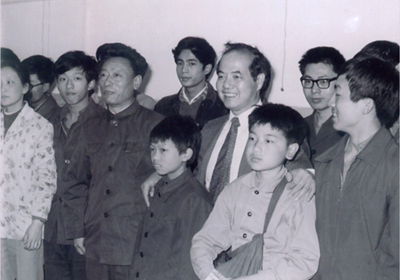
Tsung-Dao Lee was photographed with students from the School of the Gifted Young in 1984
The School of the Gifted Young (SCGY, formerly called the Special Class for the Gifted Young) of the University of Science and Technology of China (USTC) was specially designed for the most talented young students. Based on Professor Tsung-Dao Lee’s recommendation, a Nobel Prize laureate in physics, SCGY was initiated in March 1978. Since its establishment, SCGY has attracted many talented youngsters all over China.
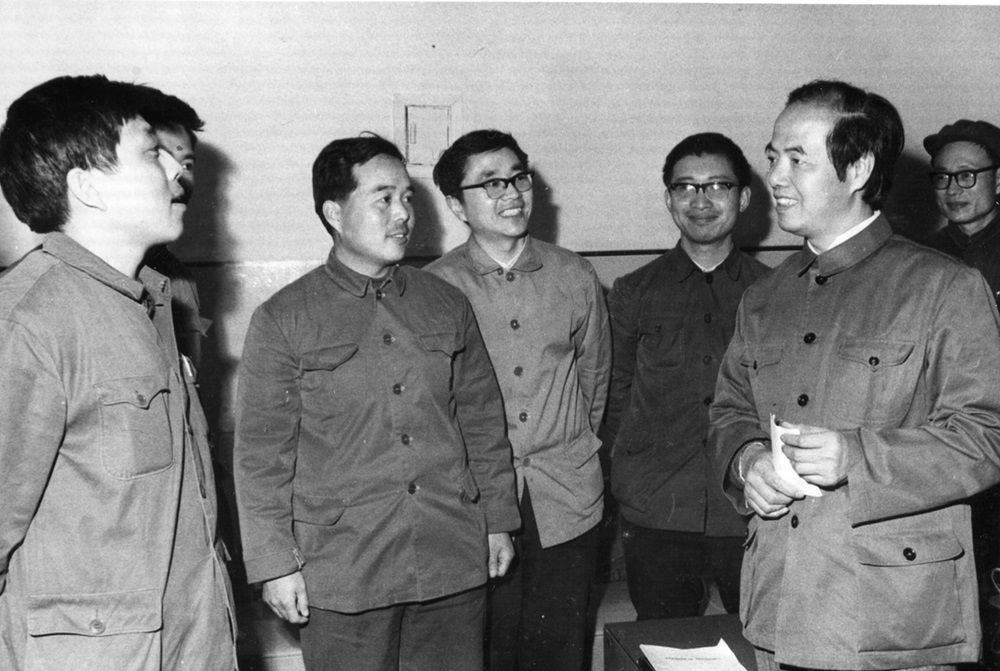
Tsung-Dao Lee communicated with students participating in the training in 1979
In April 1979, Tsung-Dao Lee delivered a series of lectures on “Statistical Mechanics and Field Theory” and “Particle Physics” in Beijing to nearly 1,000 scholars and graduate students from universities, colleges and institutes of scientific research to motivate researchers in China to keep up with overseas peers.
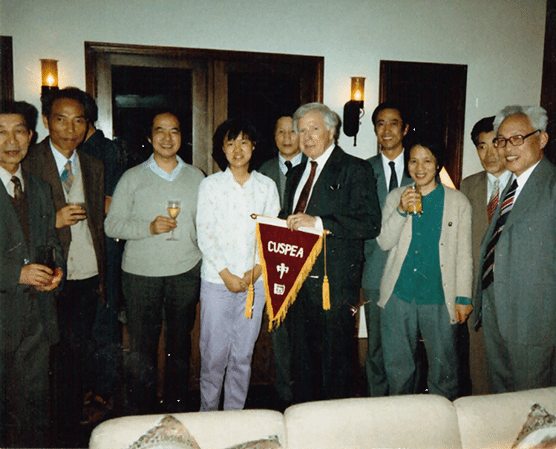
Tsung-Dao Lee participated in the CUSPEA delegation's summary activity in 1985
“China-U.S. Physics Examination and Application” (CUSPEA) was an examination and admission system used by the physics departments of some American and Canadian universities for admitting graduate school applicants from the People's Republic of China between 1979 and 1989.
It was created by the Chinese-American physicist Tsung-Dao Lee and Chinese physics community as an alternative graduate school admission procedure. At that time in China, higher education was still recovering from the Cultural Revolution; school transcripts and recommendation letters were difficult to evaluate. Furthermore, standardized tests such as the Graduate Record Examination were unavailable in China.
About 100 Chinese students went to the US every year through CUSPEA, and the total number of CUSPEA students during the decade 1978-1989 was 915. Over the years, the three Chinese universities with relatively high number of students passing the exam (ranked by their respective numbers) were University of Science and Technology of China (218), Peking University (206) and Fudan University (127).

Tsung-Dao Lee attended the 27th meeting of the China-US Joint Commission on High Energy Physics in November, 2006
The meeting brought together nearly 100 participants from more than 40 institutions in countries and regions such as China, US, Russia, Germany, Japan, South Korea as well as China's Hong Kong and Taiwan. The meeting convened at the suggestion of the China-U.S. Joint Committee on High Energy Physics chaired by Nobel laureate Tsung-Dao Lee in November 2005. It was also supported by the National Natural Science Foundation of China, Ministry of Science and Technology, and Chinese Center for Advanced Science and Technology.
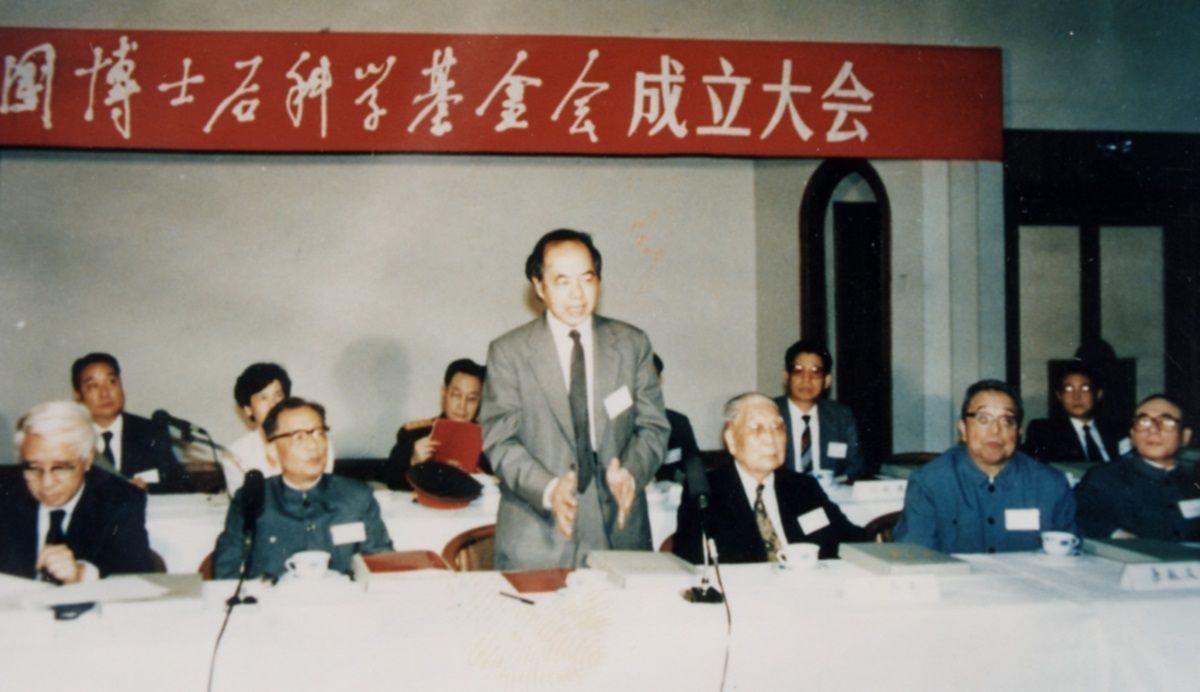
Tsung-Dao Lee delivered a speech in the inaugural ceremony of China Postdoctoral Science Foundation in 1990
Tsung-Dao Lee Recommended establishing a post-doctoral system in China when meeting with Mr. DENG Xiaoping, the former Chinese leader, in 1984 in Beijing. Due to his great effort, the post-doctoral system and the National Post-Doctor Foundation were established in China for the first time.

Tsung-Dao Lee attended the commemoration of the 10th anniversary of National Natural Science Foundation of China in 1996
In May, 1981, 89 Members of the Chinese Academy of Sciences wrote jointly to the government, suggesting the establishment of a national science fund for the purpose of providing steady support for basic research in China. This proposal met with positive response from the Chinese scientific community. However, because China was streamlining and reorganizing its administrative structures at that time, it was not easy to set up new institutions. Professor Lee took every opportunity to lobby for better basic research conditions. As a result of the joint efforts, the national science funding system was formally initiated in China. Mr. Deng Xiaoping held high expectation and stated clearly when meeting with Professor Lee on July 16, 1985 that, “All of us agree on the establishment of the National Natural Science Foundation of China, and no one will oppose it. We should do that. This is a new thing for us, so we should set it up first and gain experience from it.” Supported by Mr. Deng Xiaoping and sanctioned by the State Council, the Natural Science Foundation of China (NSFC) was founded in February 1986, as an organization directly under the jurisdiction of the State Council to administer the national natural science fund. Its intended mission was to support basic research and some applied research, identify and foster talented researchers in the realm of science and technology, accelerate the progress of science and technology, and promote the socioeconomic development in China by means of appropriate management of the national natural science fund from the central government.
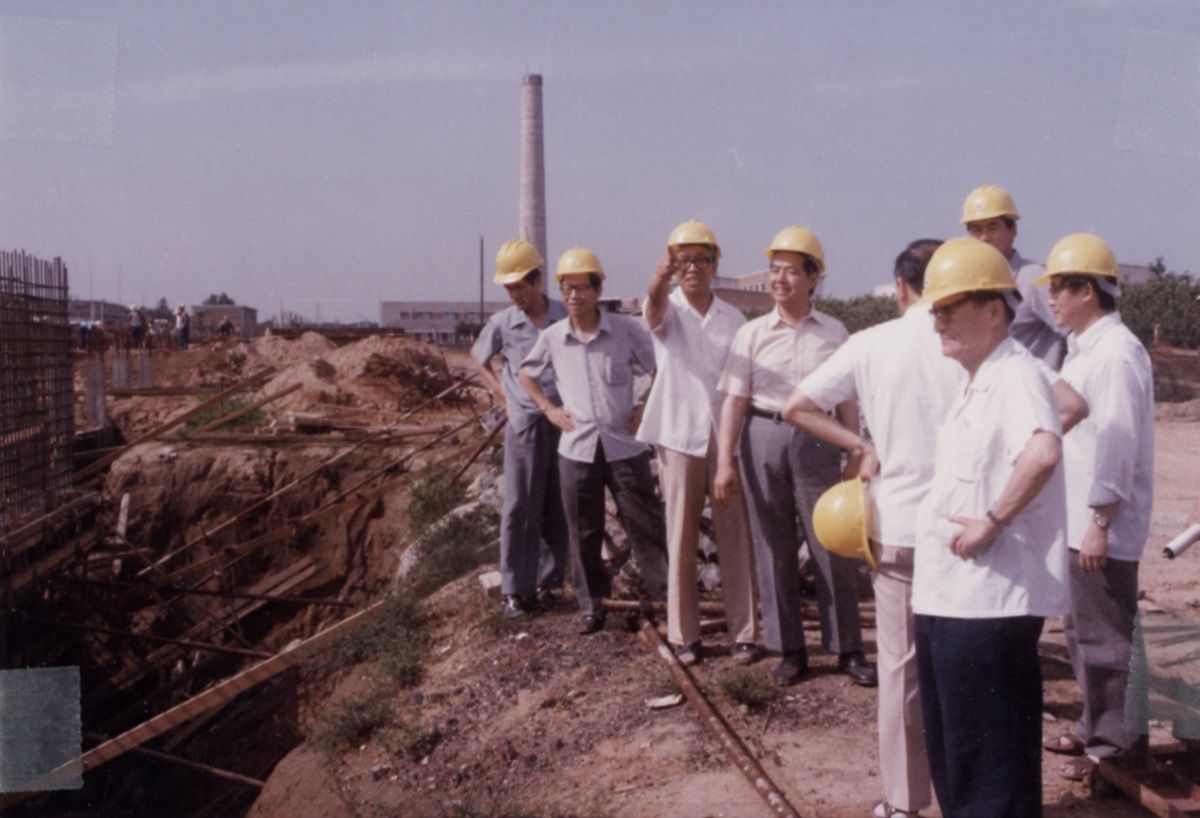
Tsung-Dao Lee visited the construction site of BEPC in 1985
The Beijing Electron Positron Collider (BEPC) was the first high energy accelerator ever built in China with the energy ranging from 1.4 to 2.8 GeV. This project was officially approved by the Chinese government on April 24, 1984 and declared one of the state key projects of the same year. On October 7, 1984, the ground was broken and on October 16, 1988, the first e+e- collision was realized, marking the project’s initial accomplishment. Building the BEPC served two purposes: The first one was to carry out research on particle physics, namely, research on charmed physics and lepton physics. In spite of numerous events accumulated for years at SPEAR in this energy region, experimental results showed that many problems persisted, which nonetheless deserved exploration while requiring higher luminosity. The designed luminosity of the BEPe is 1.7 x 1031 /cm2· s at the energy of 2 x 2.8 GeV, twice the luminosity of SPEAR. The second purpose wasto provide synchrotron radiation in VUV, soft x-ray and hard x-ray for scientific research and applications i~ other sciences. The characteristic wavelength is between 2.6 Å and 44 Å and central brightness is 4 x 1013 photons/s·mm·mrad ·1% BW.
Professor Tsung-Dao Lee of Columbia University made very valuable and great contributions to this project. Without his painstaking efforts, this project would not have been possible.

High Energy Physics and Synchrotron Radiation Subcenter of China Center of Advanced Science and Technology were founded in 1986
Lee consistently made his case that China should invest in basic research. He believed that the country should develop its own high-energy-physics program, including the building of accelerators, as a way of keeping abreast of advances at the frontiers of science and maintaining a balanced infrastructure in science. Lee also created the popular China-U.S. Physics Examination and Applications (CUSPEA) program which, from 1980 to 1988, annually brought about one hundred top Chinese physics students for graduate study in the USA. His other projects included establishment of the Chinese Center for Advanced Science and Technology (CCAST) in Beijing, initiation of a system of postdoctoral research in China, and, of course, the Beijing Electron-Positron Collider (BEPC).

The signing ceremony of Chun-Tsung Endowment took place at Peking University in 1998
Tsung-Dao Lee personally funded and established the Hui-Chun Chin and Tsung-Dao Lee Chinese Undergraduate Research Endowment (CURE) in memory of his wife.
The Chun-Tsung scholarships, supervised by the United Board for Christian Higher Education in Asia (New York), are awarded to undergraduates, usually in their 2nd or 3rd year, at five universities, which are Fudan University, Lanzhou university, Suzhou University, Peking University and Taiwan National Tsing Hua University. Students selected for such scholarships are named “Chun-Tsung Scholars”.
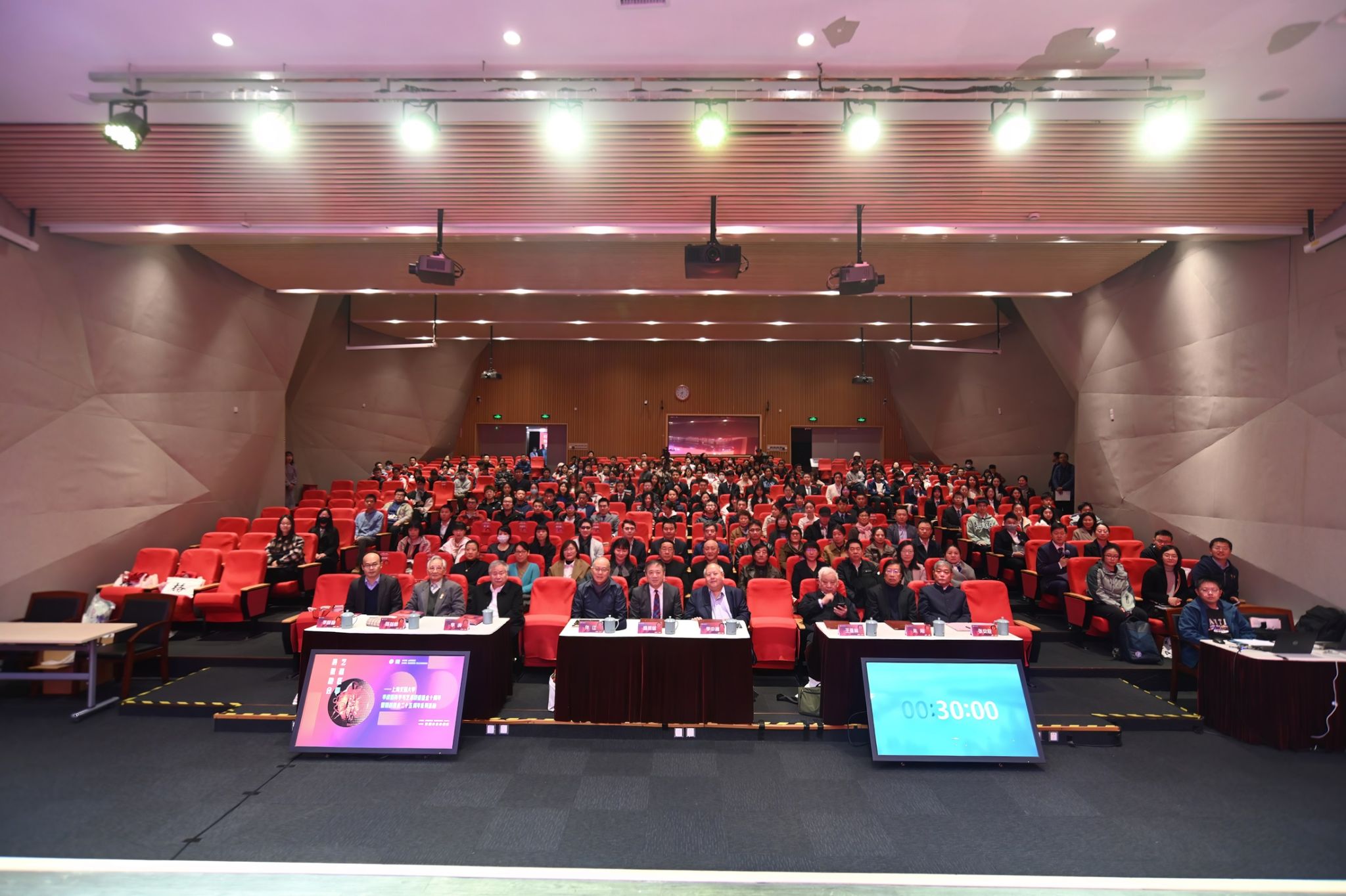
The Opening Ceremony of the 2023 SJTU T.D. Lee Science and Art Lecture Fund Series Activities
In order to better explore the combination of science and art in practice, Tsung-Dao Lee established the “SJTU T.D. Lee Science and Art Lecture Fund” in 2013. Science-themed seminars and national art competition have been organized since to promote the integration and innovation of science and art, cultivate innovative talents with expertise in both science and art, and bring wonderful scientific reverie and artistic enjoyment to the public.
From 2014 to 2024, Tsung Dao (T.D) Lee Library has successfully held eleven Science and Art Lecture Fund series activities with themes including “Synchrotron Radiation”, “Gravity and General Relativity”, “Parity Nonconservation and Neutrino Physics”, “Quantum and Topology”, “Time Reversal”, “Particles of Light”, “Spin”, “Liquid Crystal”, “Metamaterial”, “Complexity and Simplicity”, and “Instantaneous and Everlasting”, showcasing the creative and innovative interpretation of scientific and artistic subject matters from unique perspectives. These events aimed to encourage reflections on theories and exploration of artistic creation, with work brought forth by the collision and sublimation of rationality and sensibility.
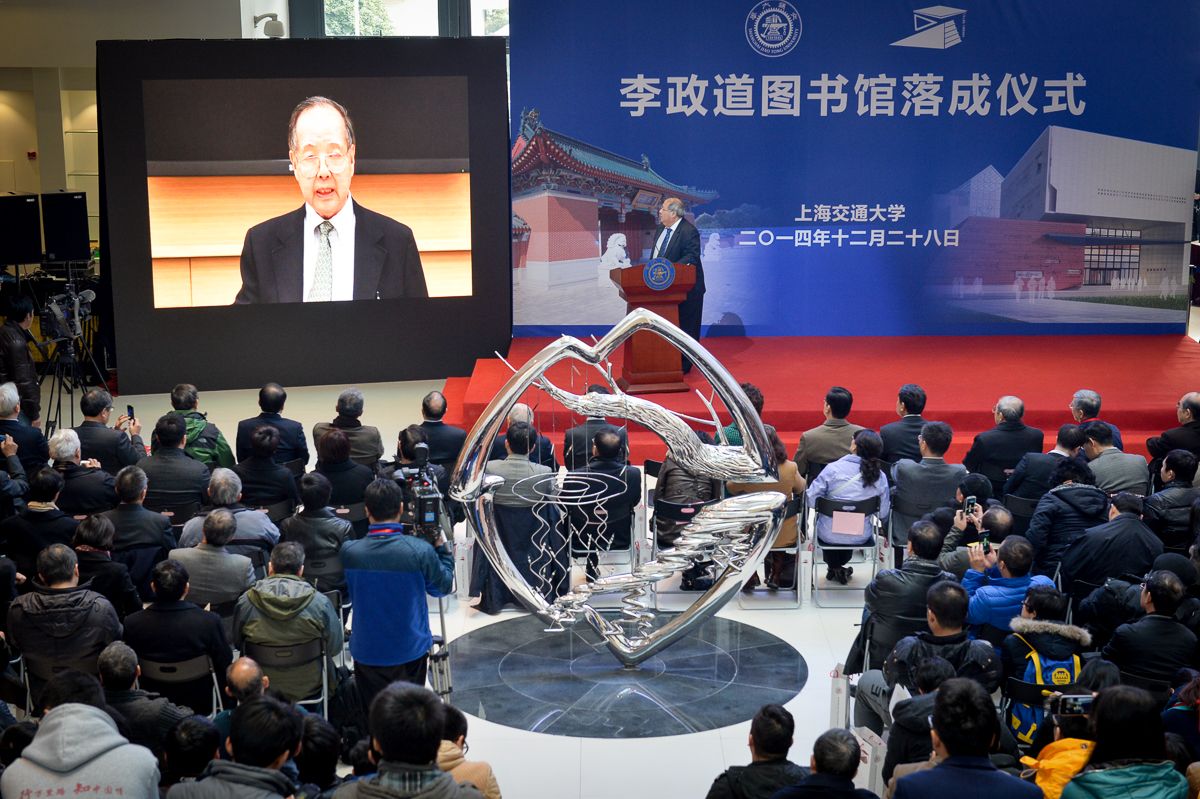
Tsung Dao (T.D) Lee Library was completed and opened in 2014
Since 2011, Tsung-Dao Lee has donated various manuscripts, Nobel Prize medal, science and art works and real estate in Shanghai to SJTU. President Zhang Jie made a special trip to Columbia University and obtained the consent of Tsung-Dao Lee to name a new library in Tsung-Dao Lee's name. In the same year, the Ministry of Education approved the project to build the Tsung Dao (T.D) Lee Library of Shanghai Jiao Tong University. The Tsung Dao (T.D) Lee Library was inaugurated on the Minhang Campus of Shanghai Jiao Tong University on December 28, 2014.
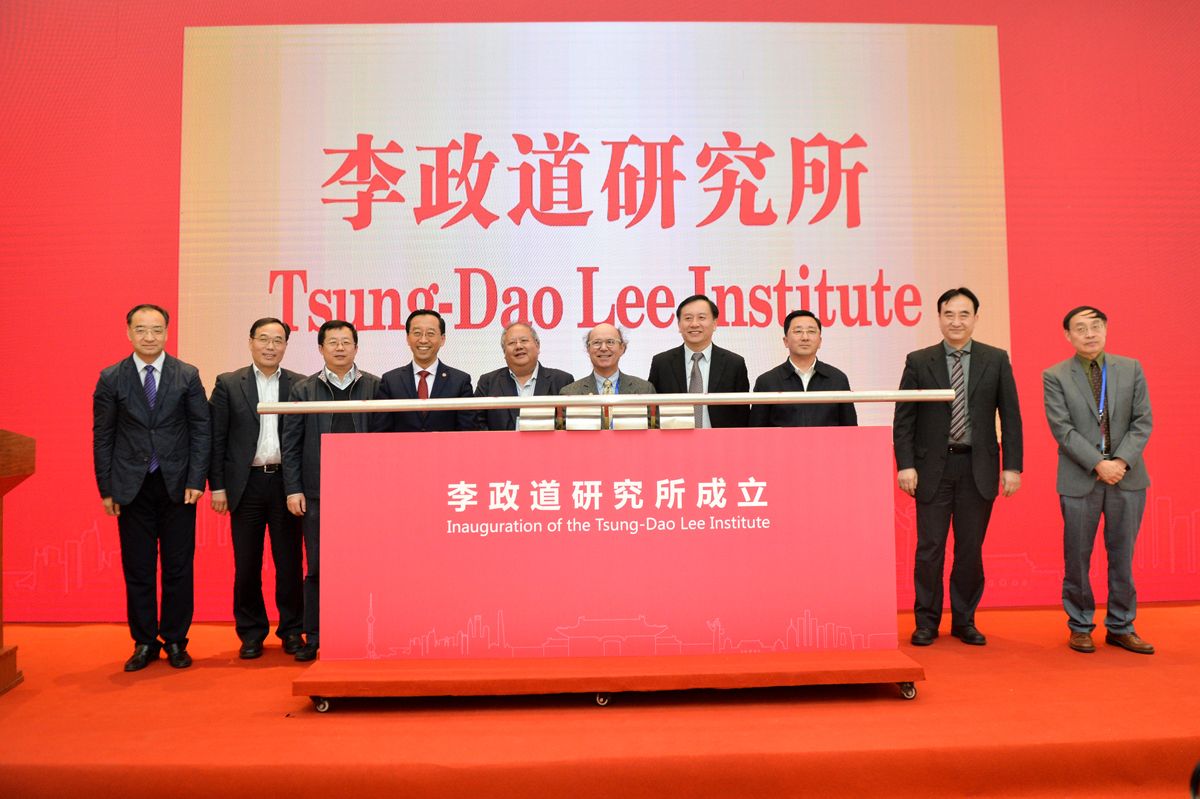
The Tsung-Dao Lee Institute was established in 2016
Proposed by the Nobel laureate Tsung-Dao Lee and with support and endorsement from governments and ministries at national and municipal levels, the Tsung-Dao Lee Institute (TDLI), a basic research institute, was established at Shanghai Jiao Tong University in November 2016, with the goal of becoming a world-leading science institute.
In keeping with Professor Tsung-Dao Lee's vision, the Institute focuses on the most fundamental science questions and conducts cutting-edge research in physics and astronomy in an effort to shed light on the relationship between the maximum and the minimum in the universe, and the most fundamental and profound laws of interaction in the nature.
By bringing research to extreme environments or creating extreme conditions, researchers at the institute strive to explore and control exotic and extreme states of matter with extreme detection methods. Eying on the greatest unsolved mysteries of the universe, they pledge to systemically assemble their teams of nearly 100 scientists to conduct pioneering research on particle and nuclear physics, astronomy and astrophysics, as well as condensed matter physics. To date, the institute has built an increasingly active presence in the science community.
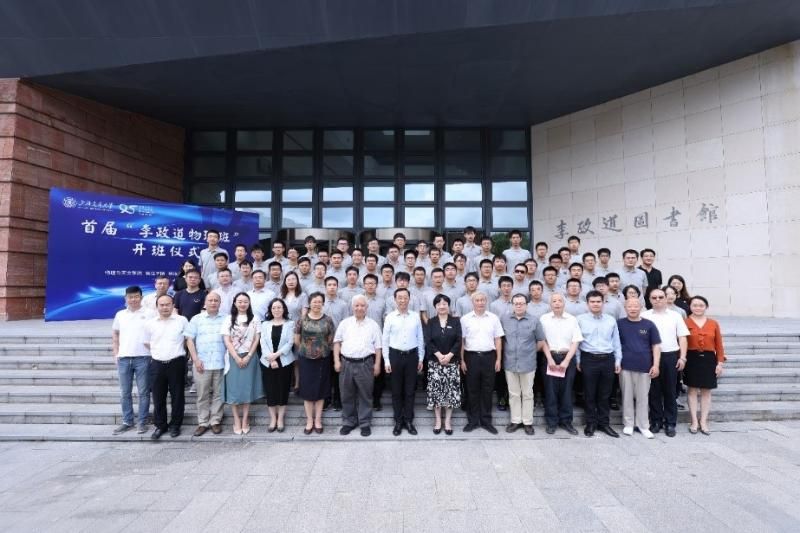
The First Tsung-Dao Lee Physics Class opened in 2021
In 2021, Tsung-Dao Lee agreed to establish the Tsung-Dao Lee Physics Class at Shanghai Jiao Tong University, with the aspiration of cultivating outstanding talents in basic sciences.






